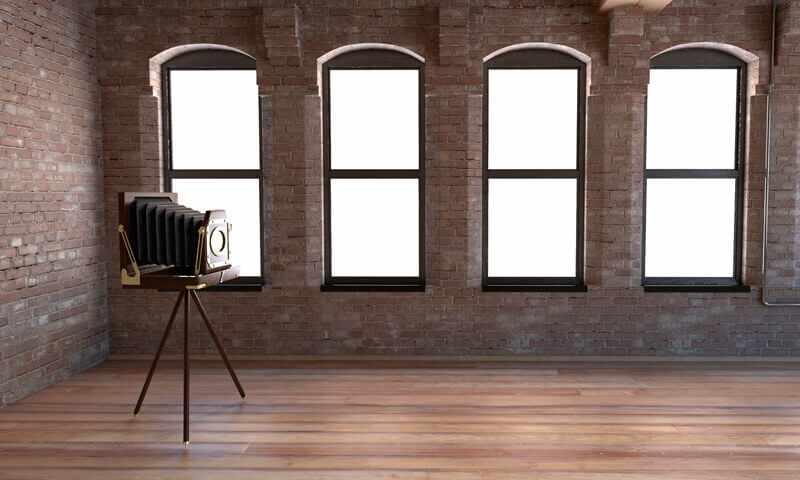
Daguerreotypes were developed in 1829 when Niepce joined with fellow French inventor Louis Daguerre to develop this remarkable achievement in photography. The big drawback to this new process was that no copies could be made from the plates. The first multiple printing came about in 1840, when the British inventor William Henry Fox Talbot introduced the calotype process, which produced a negative from light sensitive paper.
The concern of improving negative quality led to the discovery of photographic glass plates in 1847 by Claude Felix Niepce" de Saint Victor. To make a photograph, the glass plate was coated with a mixture of silver salts and wet emulsion. The plate had to remain moist during exposure and developing, requiring that photographs be processed immediately after being taken.
Samuel F. B. Morse, inventor of the telegraph, contributed much to the progress of photography through his experimentations with daguerreotypes after the details of the process arrived in America in 1839. In fact, many gave him credit as being the father of American photography. He became one of the first instructors of photography, and among his many students was Matthew B. Brady, without a doubt the most famous American photographer of the nineteenth century. Brady developed a lucrative photography business with studios in New York and Philadelphia, which he later abandoned in order to photograph the Civil War. At the end of the war, Brady had a collection of 7,000 glass plates, including 30 he had made of Abraham Lincoln. He and his crew made these between the years 1860 and 1864. At that time, there were no extensive markets for his war pictures because newspapers and magazines had no way of reproducing them except by expensive engravings made by artists copying his photographs.
After the American Civil War, camera reporters began to show an interest in covering the growth of the frontier from the Mississippi River to the Rocky Mountains. Probably the most famous photographer of this movement was William Henry Jackson, who loaded a camera big enough to use 20" x 24" glass plates on a mule's back and joined the Hayden survey in 1875. Other mules were loaded with more cameras, lenses, glass plates, chemicals, trays, dark tents, and water for exploring the region now known as Yellowstone National Park. Jackson's scenic photographs of this area were used as the principal evidence in persuading Congress to establish the nation's first national park.
During the time that Jackson was photographing the wonders of Yellowstone, the British physician R. L. Maddox developed a light sensitive gelatin emulsion that could dry on a plate without damaging the silver salts. Dry plates did not require immediate processing and thus offered freedom from the burden of the traveling darkroom.
Newspaper Photographs
The first newspaper halftone appeared in 1880 in the New York Daily Graphic. Along with the improvement of printing processes, the stature of the photographer also improved because of the distribution of photographs to thousands of viewers. With this sudden public exposure came a greater demand for photographs of all types. Studios became more numerous, and tremendous technical developments were made in all fields of photography. Because of the increasing demand for this new form of communication in a society of increasing complexity, the photographic industry emerged and blossomed, branching into specialized fields like portraiture, commercial photography, publication photography, photofinishing, and the manufacturing and sales of photographic supplies.
Photography for the Public
Any discussion of photography should include mention of George Eastman, the first manufacturer in the United States to formulate and put into practice large scale camera production at low costs for the world market. It can truthfully be said that progress in photography goes hand in hand with the history and growth of the Eastman Kodak Company.
George Eastman, an American dry plate manufacturer, advertised in 1884 that "shortly will be introduced a new sensitive film which is believed will prove an economical and convenient substitute for glass dry plates both for outdoor and studio work." This flexible, transparent film, plus an apparatus built simultaneously by American inventor Thomas Edison, made motion pictures successful.
In 1888, Eastman introduced the first Kodak camera. It was a box type camera, lightweight and small, loaded with a stripping paper long enough for 100 exposures. The price of the camera loaded with film was $25. The camera and exposed film had to be shipped to Rochester, New York, in order to have the film removed and processed into prints and another strip of film loaded into the camera. The cost for this service was $10. The Kodak camera created an entirely new market and brought forth the phrase, "You press the button and we do the rest." Thus photography was simplified to the point where anyone could take pictures with a handheld camera simply by pressing a button.
Kodak's efforts have brought forth notable contributions to photography in the medical, scientific, educational, and entertainment fields. The introduction of Kodachrome color transparency film in 1935 revitalized the world of photography. Further improvements in films contributed much to the progress of the television industry, the data processing field, and space projects. Since 1935, a continuous evolution of improved products has been produced by sensitized goods manufacturers in the United States, Europe, and Japan. Users of both still and motion picture film and equipment continue to benefit from these product improvements.
One of the most significant developments in photography was the instant photography process, invented in 1947 by Dr. Edwin Land of the Polaroid Corporation. A new industry within photography was established, providing the image maker with an invaluable tool and providing new employment opportunities.
